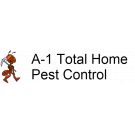
A-1 Pest Control
(on black eagle trl)Contractors in Billings, MT

We are available to help in any condition: Ants, Crickets, Fleas and bed bugs, Roaches, Spiders, Mice and rats, Raccoons and skunks, Squirrels
This is a Bit of History:
Since before 2000 BC, humans have utilized pesticides to protect their crops. The first known pesticide was elemental sulfur dusting used in ancient Sumer about 4,500 years ago in ancient Mesopotamia. By the 15th century, toxic chemicals such as arsenic, mercury and lead were being applied to crops to kill pests. In the 17th century, nicotine sulfate was extracted from tobacco leaves for use as an insecticide. The 19th century saw the introduction of two more natural pesticides, pyrethrum, which is derived from chrysanthemums, and rotenone, which is derived from the roots of tropical vegetables.[56] Until the 1950s, arsenic-based pesticides were dominant.[57] Paul M�ller discovered that DDT was a very effective insecticide. Organochlorines such as DDT were dominant, but they were replaced in the U.S. by organophosphates and carbamates by 1975. Since then, pyrethrin compounds have become the dominant insecticide.[57] Herbicides became common in the 1960s, led by "triazine and other nitrogen-based compounds, carboxylic acids such as 2,4-dichlorophenoxyacetic acid, and glyphosate".[57]